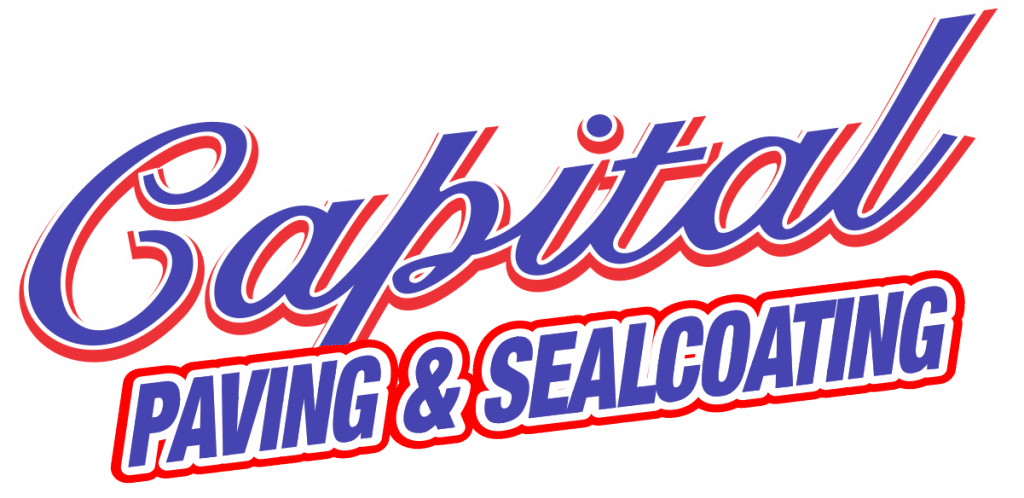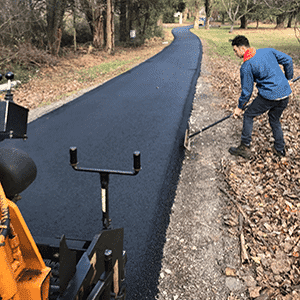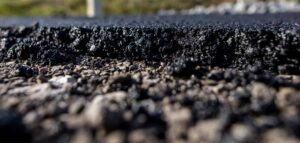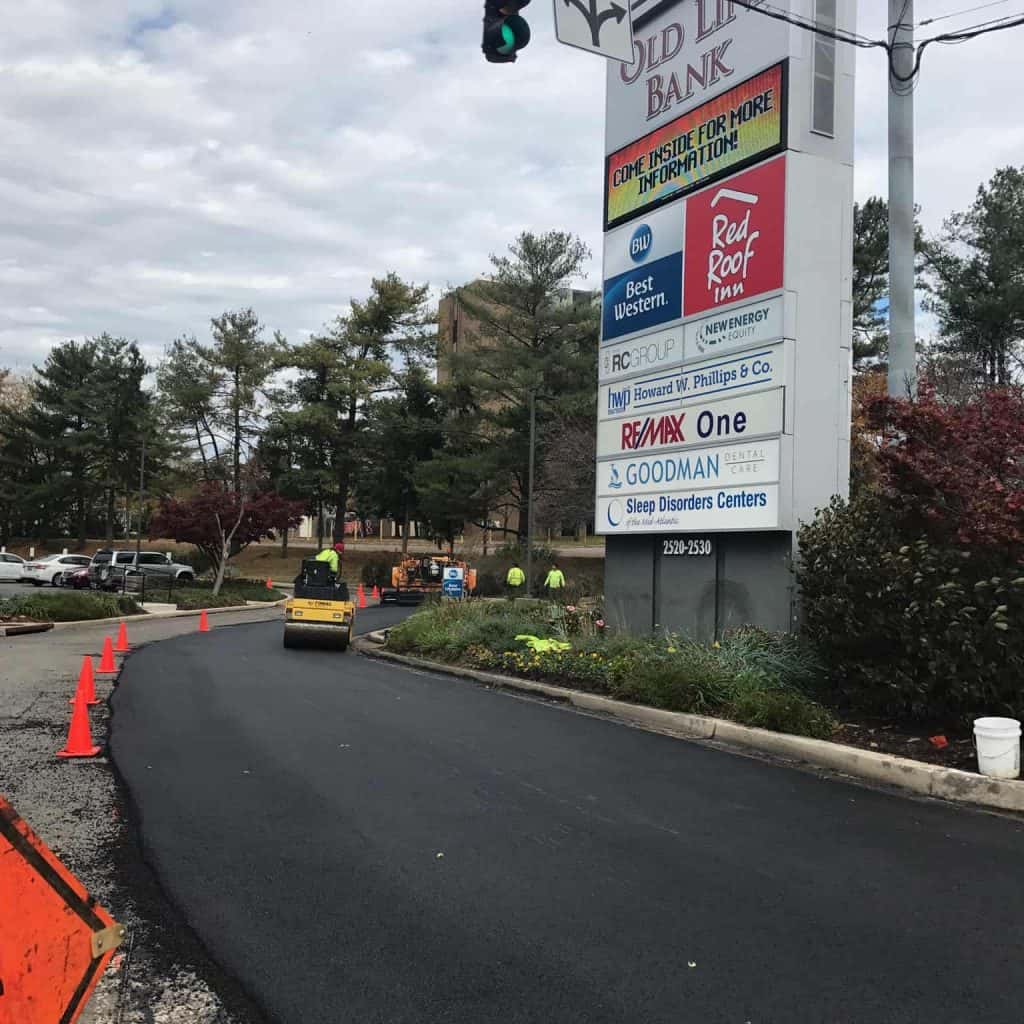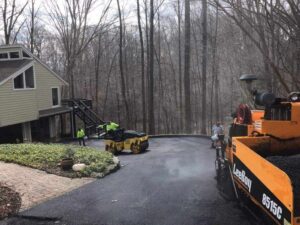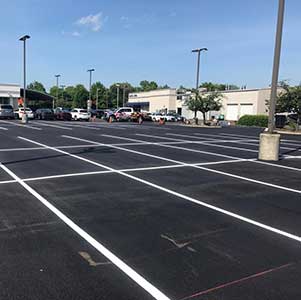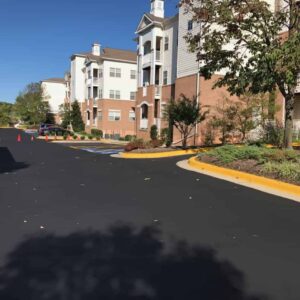Asphalt is a durable and reliable material for roads, driveways, and parking lots, but like anything else, it needs proper care to stay in good condition. Proper drainage is one of the most crucial aspects of asphalt maintenance and is often overlooked. Without adequate drainage, your asphalt surface can suffer from various issues that diminish its appearance and shorten its lifespan. Let’s dive into why proper drainage is essential for keeping your asphalt healthy and what you can do to ensure your pavement stands the test of time.
Why Proper Drainage Matters
Prevents Water Accumulation
Water is one of asphalt’s biggest enemies. When water accumulates on the surface, it can seep into the asphalt layers, leading to deterioration. This process starts small but can quickly escalate, causing cracks, potholes, and even complete pavement failure. Proper drainage ensures that water is quickly and efficiently removed from the surface, reducing the risk of damage.
Minimizes Freeze-Thaw Cycles
In colder climates, the freeze-thaw cycle is a significant concern. Water that seeps into asphalt cracks will freeze and expand during cold weather, causing the cracks to widen. When the ice melts, the water penetrates deeper into the asphalt, repeating the cycle and causing progressive damage. Proper drainage helps to minimize the amount of water that can enter these cracks, reducing the impact of freeze-thaw cycles.
Reduces Load Stress
Standing water adds extra weight to the asphalt surface, increasing the stress load. This added stress can lead to surface deformation and cracking, particularly in high-traffic areas. Adequate drainage prevents water from pooling, thus reducing the additional load stress and preserving the structural integrity of the asphalt.
Prevents Erosion of the Subbase
The subbase is a critical component of your asphalt pavement, providing the foundational support needed for durability and longevity. Water that isn’t properly drained can erode the subbase, leading to uneven surfaces and eventual pavement failure. Good drainage protects the subbase from erosion, keeping your asphalt solid and stable.
Common Drainage Solutions for Asphalt
Proper Slope and Grading
One of the simplest yet most effective ways to ensure proper drainage is through correct slope and grading. Asphalt surfaces should be designed to direct water towards drainage outlets with a slight slope. This way, water naturally flows away from the pavement, preventing accumulation and potential damage.
Installing Drainage Systems
A dedicated drainage system is necessary in some cases, especially in larger areas like parking lots. This includes catch basins, trench drains, and French drains, all designed to collect and divert water from the asphalt surface. These systems can be customized based on the area’s specific needs, ensuring optimal drainage performance.
Regular Maintenance
Even the best drainage systems require regular maintenance to function correctly. This includes cleaning out debris from drains, checking for and repairing clogs, and ensuring the drainage slopes remain intact. Regular maintenance helps catch potential issues early before they become significant problems.
Sealcoating
Sealcoating your asphalt surface provides an additional layer of protection against water infiltration. This process involves applying a protective coating over the asphalt, sealing small cracks, and preventing water from penetrating the surface. Sealcoating should be done every few years as part of your regular maintenance routine.
Addressing Pain Points
Cost Concerns
One common pain point for many property owners is the cost of drainage solutions and asphalt maintenance. However, investing in proper drainage can save you money in the long run. The cost of repairing water damage to asphalt is often much higher than the initial investment in drainage solutions. By preventing damage before it occurs, you can avoid costly repairs and extend the life of your pavement.
Inconvenience of Maintenance
Another concern is the inconvenience of ongoing maintenance. While it’s true that maintenance requires time and effort, neglecting it can lead to more significant disruptions down the line. Regular maintenance checks are relatively quick and can be scheduled during off-peak hours to minimize disruption to your property. In the long run, these small efforts can prevent significant repair work that would be far more inconvenient.
Environmental Impact
Some property owners are concerned about the environmental impact of drainage systems. Many modern drainage solutions are designed with environmental considerations in mind. For instance, permeable pavements allow water to seep through the surface and into the ground, reducing runoff and promoting natural water filtration. Additionally, proper drainage prevents pollutants from accumulating on the asphalt surface, reducing the risk of contamination to surrounding areas.
Conclusion
Proper drainage is essential for maintaining the health and longevity of your asphalt surfaces. By preventing water accumulation, minimizing freeze-thaw cycles, reducing load stress, and protecting the subbase, good drainage practices ensure that your asphalt remains in top condition for years to come. While there may be some upfront costs and maintenance efforts involved, the long-term benefits far outweigh these concerns. Investing in proper drainage solutions preserves your asphalt and saves you money and hassle in the long run.
Remember, an ounce of prevention is worth a pound of cure when it comes to asphalt. Make sure your pavement has the drainage it needs to stay healthy and functional, and you’ll enjoy a smooth, durable surface for many years to come. If you have any questions or need professional assistance with your asphalt drainage, don’t hesitate to contact our expert team. We’re here to help protect your investment and keep your pavement in the best possible shape.
